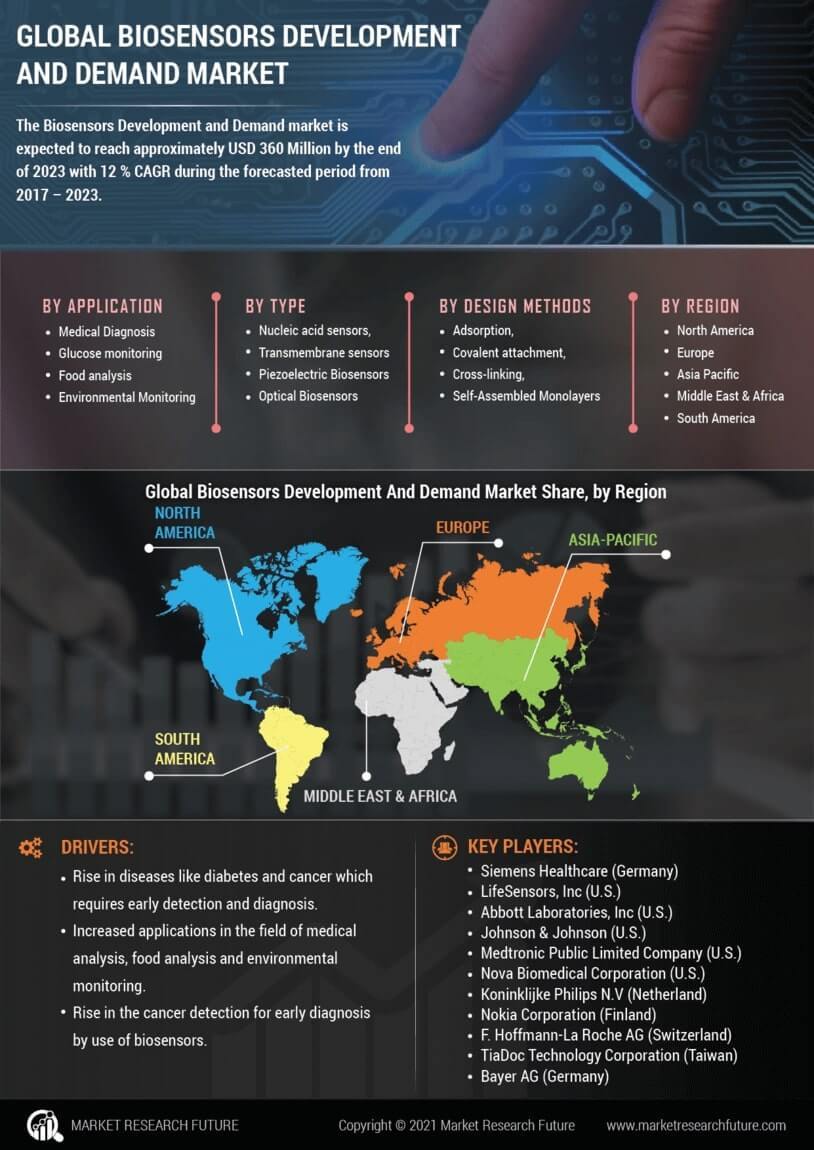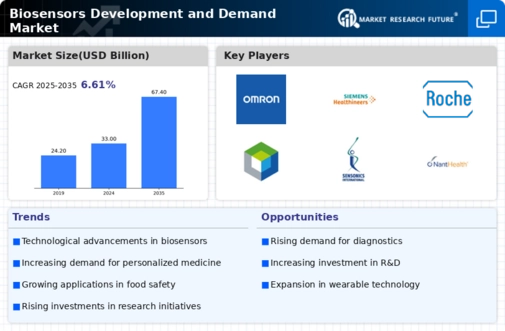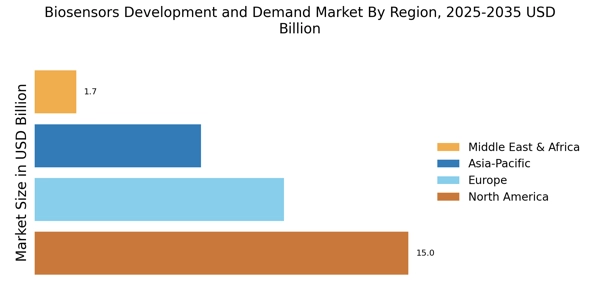Focus on Preventive Healthcare
The growing emphasis on preventive healthcare is significantly influencing the Biosensors Development and Demand Market. As healthcare systems shift from reactive to proactive approaches, there is an increasing need for tools that facilitate early detection and continuous health monitoring. Biosensors play a pivotal role in this paradigm shift, enabling individuals to track their health metrics and make informed lifestyle choices. The preventive healthcare market is projected to expand rapidly, with biosensors being integral to this transformation. This trend suggests that the Biosensors Development and Demand Market will continue to thrive as consumers and healthcare providers prioritize health maintenance and disease prevention.
Rising Prevalence of Chronic Diseases
The increasing incidence of chronic diseases such as diabetes, cardiovascular disorders, and cancer is a primary driver of the Biosensors Development and Demand Market. As healthcare systems strive to manage these conditions effectively, the demand for biosensors that enable real-time monitoring and management of health parameters is surging. For instance, the World Health Organization has reported that chronic diseases account for approximately 70% of all deaths worldwide. This alarming statistic underscores the necessity for innovative biosensor technologies that can facilitate early diagnosis and continuous monitoring, thereby improving patient outcomes. The Biosensors Development and Demand Market is likely to witness substantial growth as healthcare providers and patients alike seek advanced solutions to combat these pervasive health challenges.
Technological Innovations in Biosensing
Technological advancements in biosensing technologies are propelling the Biosensors Development and Demand Market forward. Innovations such as microfluidics, nanotechnology, and wireless communication are enhancing the sensitivity and specificity of biosensors. For example, the integration of nanomaterials has been shown to significantly improve the detection limits of biosensors, making them more effective for various applications, including disease diagnostics and environmental monitoring. According to recent estimates, the biosensor market is projected to reach USD 30 billion by 2026, driven by these technological breakthroughs. As research and development continue to evolve, the Biosensors Development and Demand Market is expected to expand, offering new opportunities for manufacturers and end-users alike.
Growing Demand for Point-of-Care Testing
The shift towards point-of-care testing (POCT) is reshaping the landscape of the Biosensors Development and Demand Market. Patients and healthcare providers increasingly prefer rapid diagnostic solutions that can be administered outside traditional laboratory settings. This trend is fueled by the need for timely decision-making in clinical environments, particularly in emergency and remote care situations. The market for POCT is anticipated to grow at a compound annual growth rate of over 10% in the coming years, reflecting the rising demand for accessible and efficient diagnostic tools. Consequently, the Biosensors Development and Demand Market is likely to benefit from this trend, as manufacturers focus on developing portable and user-friendly biosensors that cater to the needs of both healthcare professionals and patients.
Increased Investment in Healthcare Infrastructure
Investment in healthcare infrastructure is a crucial driver of the Biosensors Development and Demand Market. Governments and private entities are allocating substantial resources to enhance healthcare facilities and technologies, particularly in developing regions. This investment is aimed at improving healthcare access and quality, which in turn drives the demand for advanced diagnostic tools, including biosensors. For instance, initiatives to establish more comprehensive healthcare systems are likely to create a favorable environment for the adoption of biosensing technologies. As healthcare infrastructure continues to evolve, the Biosensors Development and Demand Market is expected to experience growth, as stakeholders seek innovative solutions to meet the rising healthcare demands.

















Leave a Comment